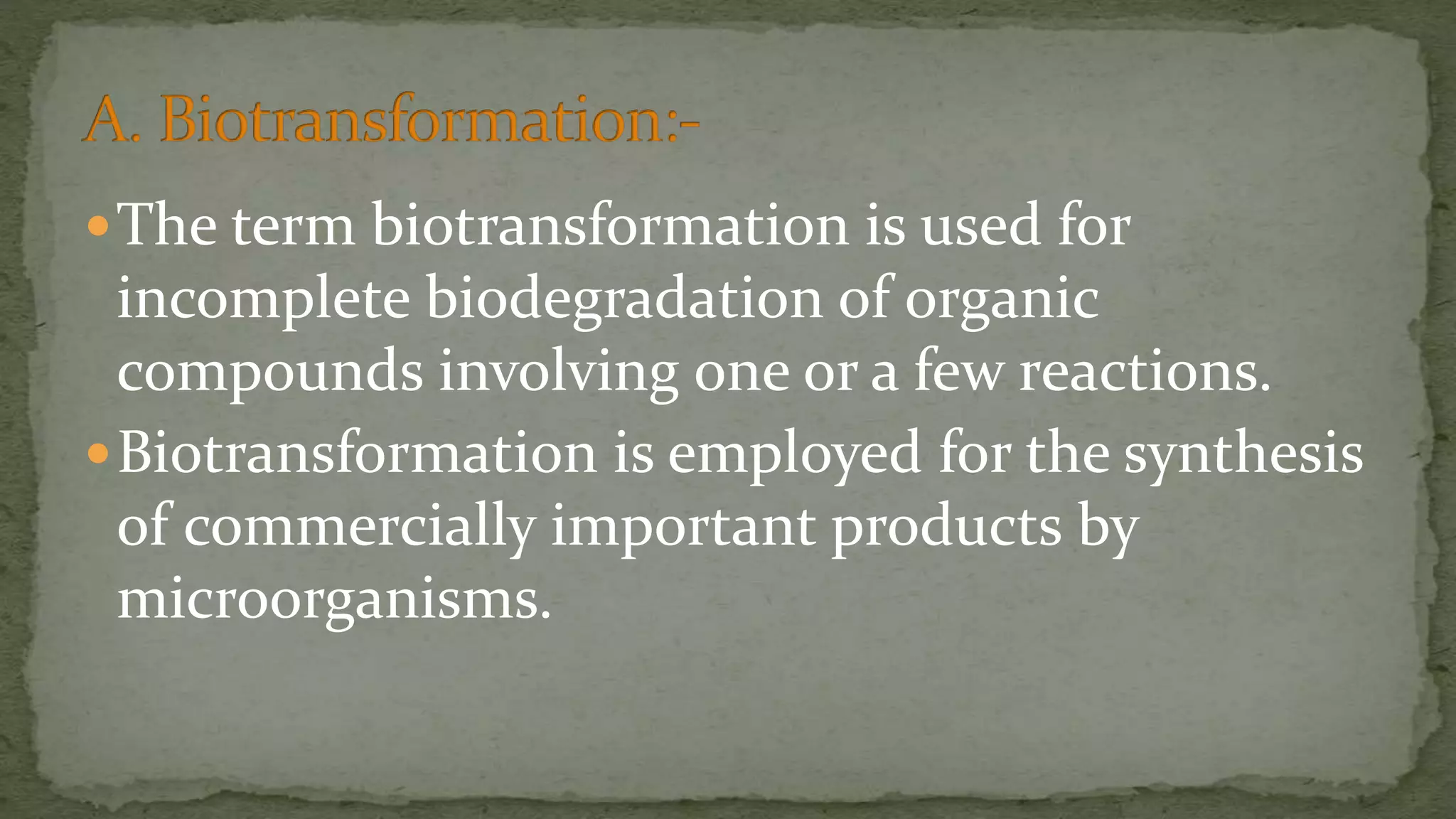The document discusses biotransformation and bioremediation, emphasizing the microbial degradation of organic substances and pollutants, including hydrocarbons, pesticides, and plastics. It outlines the processes and timeframes for biodegradation of various materials, and highlights the role of microorganisms such as bacteria and fungi in these processes. Additionally, it covers the definitions and characteristics of xenobiotics and the impact of industries like petrochemicals and plastics on biodegradation.



















